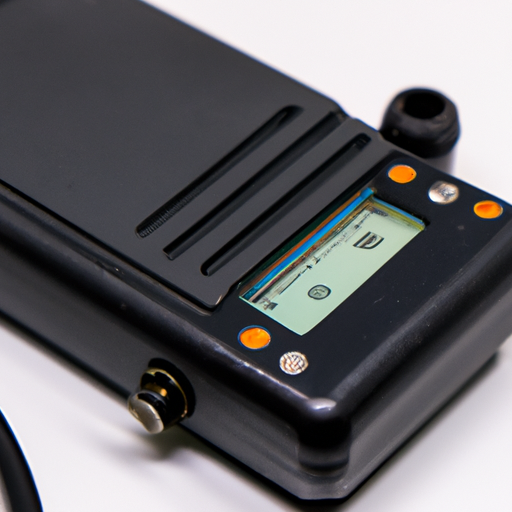The price of hot spot RF sampling transceiver models can vary depending on various factors such as the brand, specifications, features, and market demand. In this article, we will explore some popular hot spot RF sampling transceiver models and their price ranges to give you an idea of what to expect when purchasing one of these devices.

2. LimeSDR: The LimeSDR is an open-source software-defined radio (SDR) platform that provides flexibility and versatility for various wireless communication applications. It operates in the frequency range of 100 kHz to 3.8 GHz and offers two transmit and two receive channels. The LimeSDR is available in different versions, including the LimeSDR Mini and LimeSDR USB, with prices ranging from $150 to $300.
3. USRP (Universal Software Radio Peripheral): The USRP is a series of SDR devices developed by Ettus Research, a subsidiary of National Instruments. These devices offer a wide frequency range, high bandwidth, and excellent signal processing capabilities. The price of USRP devices can vary significantly depending on the specific model and configuration. The entry-level USRP B200 Mini, for example, starts at around $1100, while the high-end USRP X310 can cost upwards of $10,000.
4. HackRF One: The HackRF One is another popular open-source SDR platform that provides a wide frequency range of 1 MHz to 6 GHz. It offers half-duplex operation and is capable of transmitting and receiving signals. The HackRF One is known for its affordability, with prices typically ranging from $200 to $300.
5. BladeRF: The BladeRF is a low-cost SDR platform that operates in the frequency range of 300 MHz to 3.8 GHz. It offers full-duplex operation and is equipped with a field-programmable gate array (FPGA) for enhanced signal processing capabilities. The BladeRF is available in different versions, including the BladeRF x40 and BladeRF x115, with prices ranging from $400 to $700.
6. PlutoSDR: The PlutoSDR is a low-cost SDR platform developed by Analog Devices. It operates in the frequency range of 325 MHz to 3.8 GHz and offers full-duplex operation. The PlutoSDR is known for its compact size and affordability, with prices typically ranging from $100 to $200.
It is important to note that the prices mentioned above are approximate and can vary depending on the supplier, location, and any additional accessories or software included with the transceiver. It is always recommended to check with authorized distributors or manufacturers for the most accurate and up-to-date pricing information.
In conclusion, hot spot RF sampling transceiver models come in a wide range of prices depending on the brand, specifications, and features. From high-end, feature-rich transceivers to more affordable open-source platforms, there are options available to suit different budgets and requirements. When considering purchasing a hot spot RF sampling transceiver, it is essential to evaluate the specific features and capabilities required for your application and compare prices from different suppliers to make an informed decision.
The price of hot spot RF sampling transceiver models can vary depending on various factors such as the brand, specifications, features, and market demand. In this article, we will explore some popular hot spot RF sampling transceiver models and their price ranges to give you an idea of what to expect when purchasing one of these devices.

2. LimeSDR: The LimeSDR is an open-source software-defined radio (SDR) platform that provides flexibility and versatility for various wireless communication applications. It operates in the frequency range of 100 kHz to 3.8 GHz and offers two transmit and two receive channels. The LimeSDR is available in different versions, including the LimeSDR Mini and LimeSDR USB, with prices ranging from $150 to $300.
3. USRP (Universal Software Radio Peripheral): The USRP is a series of SDR devices developed by Ettus Research, a subsidiary of National Instruments. These devices offer a wide frequency range, high bandwidth, and excellent signal processing capabilities. The price of USRP devices can vary significantly depending on the specific model and configuration. The entry-level USRP B200 Mini, for example, starts at around $1100, while the high-end USRP X310 can cost upwards of $10,000.
4. HackRF One: The HackRF One is another popular open-source SDR platform that provides a wide frequency range of 1 MHz to 6 GHz. It offers half-duplex operation and is capable of transmitting and receiving signals. The HackRF One is known for its affordability, with prices typically ranging from $200 to $300.
5. BladeRF: The BladeRF is a low-cost SDR platform that operates in the frequency range of 300 MHz to 3.8 GHz. It offers full-duplex operation and is equipped with a field-programmable gate array (FPGA) for enhanced signal processing capabilities. The BladeRF is available in different versions, including the BladeRF x40 and BladeRF x115, with prices ranging from $400 to $700.
6. PlutoSDR: The PlutoSDR is a low-cost SDR platform developed by Analog Devices. It operates in the frequency range of 325 MHz to 3.8 GHz and offers full-duplex operation. The PlutoSDR is known for its compact size and affordability, with prices typically ranging from $100 to $200.
It is important to note that the prices mentioned above are approximate and can vary depending on the supplier, location, and any additional accessories or software included with the transceiver. It is always recommended to check with authorized distributors or manufacturers for the most accurate and up-to-date pricing information.
In conclusion, hot spot RF sampling transceiver models come in a wide range of prices depending on the brand, specifications, and features. From high-end, feature-rich transceivers to more affordable open-source platforms, there are options available to suit different budgets and requirements. When considering purchasing a hot spot RF sampling transceiver, it is essential to evaluate the specific features and capabilities required for your application and compare prices from different suppliers to make an informed decision.












